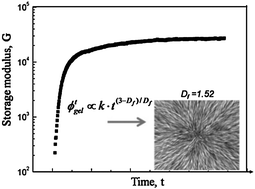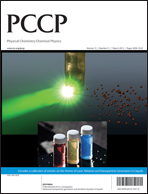From kinetic–structure analysis to engineering crystalline fiber networks in soft materials†
Abstract
Understanding the role of kinetics in fiber network microstructure formation is of considerable importance in engineering gel materials to achieve their optimized performances/functionalities. In this work, we present a new approach for kinetic–structure analysis for fibrous gel materials. In this method, kinetic data is acquired using a rheology technique and is analyzed in terms of an extended Dickinson model in which the scaling behaviors of dynamic rheological properties in the gelation process are taken into account. It enables us to extract the structural parameter, i.e. the fractal dimension, of a fibrous gel from the dynamic rheological measurement of the gelation process, and to establish the kinetic–structure relationship suitable for both dilute and concentrated gelling systems. In comparison to the fractal analysis method reported in a previous study, our method is advantageous due to its general validity for a wide range of fractal structures of fibrous gels, from a highly compact network of the spherulitic domains to an open fibrous network structure. With such a kinetic–structure analysis, we can gain a quantitative understanding of the role of kinetic control in engineering the microstructure of the fiber network in gel materials.


 Please wait while we load your content...
Please wait while we load your content...